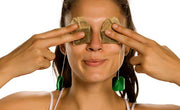Savor Tea Like a Vintage Wine

Note every tea is the same! Our mission at Tealeavz is to share ideas with our community to help keep you healthy – and how tea can play a role. We hope you enjoy this piece by our guest author, and learn why it is important to steep each tea to appreciate each tea to the fullest.
"Tea is parallel to wine," says Anthony Capobianco, founder and CEO of Zen Tea Traders and an expert who travels the world in search of the finest single-origin teas-each from a specific estate rather than being a blend. "The flavor varies from one year to another, like vintage wines," he says. Brewed right, estate teas exude unique flavors and aromas of distant origins and appeal to multiple senses. This, says Capobianco, is the way to brew:
Hot brew: Water temperature varies, depending on the type of tea, but never pour boiling water onto tea (except herbal), as it brings out too much bitterness.
Use 1 teaspoon of tea per 8-ounce cup for hot teas, and 2 teaspoons per cup for herbal, cold-brewed, or iced tea.
Cold brew vs. iced: Compared to iced tea, typically made with boiling water and then cooled, cold brewing produces a milder, sweeter flavor, which is less likely to need a sweetener. To cold brew, pour cold water over tea and let it sit in the fridge for 10 hours. Already chilled, it doesn't need ice.
DIY decaf: To eliminate 90-95 percent of the caffeine in tea, steep for 30 seconds, discard the water, and steep again.
Food pairing: Serve darker teas with heavy foods such as steak, and white or lighter teas with fish and light foods.
Vital Tea Tip: Never microwave water, as it will produce a flat, dull-tasting tea.
Written by betternut-editor for Better Nutrition and legally licensed through the Matcha publisher network. Please direct all licensing questions to legal@getmatcha.com.





